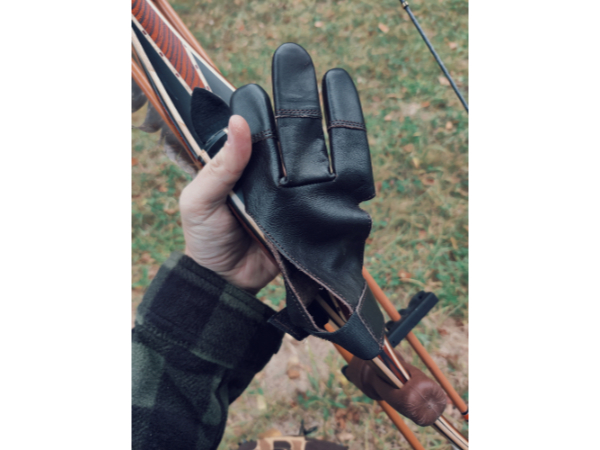Original artwork by Kyle Sivertsen
I was cold and stiff from two hours of sitting motionless near a game trail waiting for elk. The mid-October morning was the first cold one of the fall, and I felt underdressed. Until this point, my elk season had involved warmer weather and more movement on my part as I searched for elk. With the rut winding down, I’d decided to sit an elk trail with fresh sign. A light breeze from the north penetrated my clothing, and I tried isometrics to generate some heat. Despite the static exercise, I was shivering and ready to strap my tree seat to my pack and head up the mountain to warm up and search for elk.
Suddenly a pine squirrel chattered enthusiastically 40 yards distant. His elevated position afforded a view of the opposite side of the little ridge my elk trail meandered over, a view I did not share. I immediately focused my attention in that direction, as my squirrel scout continued his harangue. Aided by excitement my shivering increased, but I stayed put. Something was approaching.
Fifteen minutes after the first warning, several elk crested the ridge simultaneously just 50 yards away. Ignoring the trail, they were scattered in a loose group and coming directly toward me. Within minutes several cows, calves, and a mature 6×6 bull were 30 yards away and closing. My position did not allow a shot to the right, where the bull was. I couldn’t move because of two cows and a calf 15 yards away facing me with no cover between us. At 20 yards, the bull turned broadside and followed a cow down the draw and out of my life.
That event did not result in a punched tag. However, it was fun, exciting, and is now a fond memory. Without the announcement from my squirrel scout, I would have been up the mountain, either missing the elk entirely or, worse yet, spooking them out of the area. Although not fluent in squirrel language, I have learned that their chattering has meaning. All wildlife must be aware of others in their territory; predators look for prey, and prey watches for predators. Most species communicate vocally and with body language. By being aware, we can tune in and use what we see and hear to our own advantage.
My first tree stand sit last season proved interesting. It was a warm, still afternoon a couple of hours before prime time deer movement. Suddenly, from 80 yards away an agitated pine squirrel cut loose with loud, rapid-fire chatter. With an arrow on the string, I stood up, facing the direction of the noise. Within seconds, a coyote came at a fast trot, passing in bow range without offering a shot. Traveling quickly, the coyote had come up on the squirrel suddenly and startled him. Seeing the coyote initiated intense chatter filled with fear. Deer or elk, in contrast, elicit a steady scolding chatter, more an announcement than an alarm.
When I first hear a squirrel, I assume there is game coming and adjust my body position. Often you can track the progress of game as other squirrels bark when an animal approaches their individual territories, providing an auditory map of game movement. Many times this affords considerable advantage. When the game comes into view, I’m already in position for the shot with no additional movement necessary. This advance notice is especially helpful while hunting on the ground.
Be aware that squirrels also announce our movement to other animals but normally accept you if you sit for a while. If a squirrel scolds you while you’re moving through the woods and you think there may be game nearby, stop for several minutes. Game animals may key on this scolding but they are used to woods chatter, so if you remain still and unseen, they remain calm.
Birds often announce other animals’ presence. Jays and squirrels both scold us when bugling for elk. Noisy jays, magpies, or ravens can indicate the presence of a carcass. That’s always worth investigating, but be careful in grizzly country!
Animals’ body language provides a good indicator of their intentions, and understanding it can be useful. A calm, feeding deer will display relaxed ears and an occasionally swishing tail. If a deer repeatedly looks in the same direction but remains calm, there could be another deer in the area. If a calm deer suddenly grows tense with alert ears and stays focused on one spot, there may be predators about.
I’ve focused on pine squirrels because I spend considerable time in their territory. Your hunting area may have other wildlife allies. Get to know them, learn their habits and their language, and you will have a more enjoyable time in the field and increase your chance of success. Time on stand will never be boring if you spend it learning the details of the woods.







I’ve been bowhunting for over forty years. I NEVER saw a squirrel alarm at a deer or an elk. They don’t waste time alarming at things that don’t bother them. They’ll alarm at bobcats, house cats and sometimes foxes and people, but not at hooved animals.
There is a fantastic book on this subject called “What the Robin Knows”, by Jon Young. I can’t recommend it high enough. Aside from the obvious benefits to hunting, studying the language of the birds and squirrels will deepen every experience you have out there in the real world, Nature.